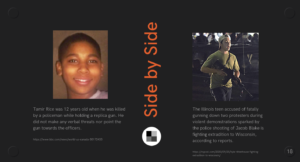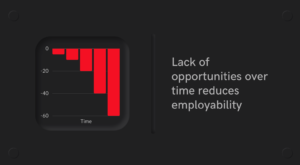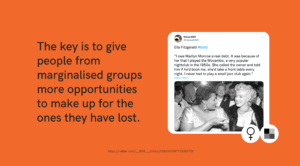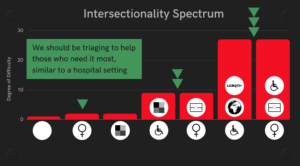This is the landing page for “Improving Diversity and Inclusion in Senior Leadership: A workshop to help recruit diverse senior leaders”.
This workshop focuses on key areas that allows you to understand what is really needed and provides practical tips on how to get started right now.
We would encourage people to apply who are unsure or concerned that they don’t know enough – this is definitely for you!
The first session (1.5 hours) would be an introduction presentation.
The second session (1.5 hours) would be:
-
reviewing the recruitment process that the organisation of each individual has,
-
writing up improvements to that process, and
-
brainstorming how that process could be implemented within that organisation.
In the introduction presentation you will learn:
1. that this will be uncomfortable and will challenge you.

2. to understand systemic imbalance, microaggressions and the cumulative effects they have on careers.

3. to recognise if you remove bias (ie stay neutral) at the recruitment stage, you are actually siding with oppression, and that you need to act to make up for the cumulative discrimination people have faced.

4. to recognise that discrimination creates a lack of opportunities because people are treated differently, and that accumulates and reduces employability over time.


5. to accept that when someone becomes neutral at recruitment, people who are marginalised won’t have as many opportunities and the only way to fix that is to “give people from marginalised groups more opportunities to make up for the ones they have lost”. This is the equivalent of turning the steering wheel to the left to make up for the car moving to the right.


7. practical tips on how to improve recruitment and onboarding.

8. how this has worked in previous situations.

A shorter version of this is at 15 minute introdution to Diversity and Inclusion for workplaces, but you can see the full set of slides at:
Mosbergen, Rowland (2021): Improving Diversity and Inclusion in Senior Leadership: A workshop to help recruit diverse senior leaders. figshare. Presentation.
https://doi.org/10.6084/m9.figshare.14315846
And a recording of the latest version in May 2022 is available.